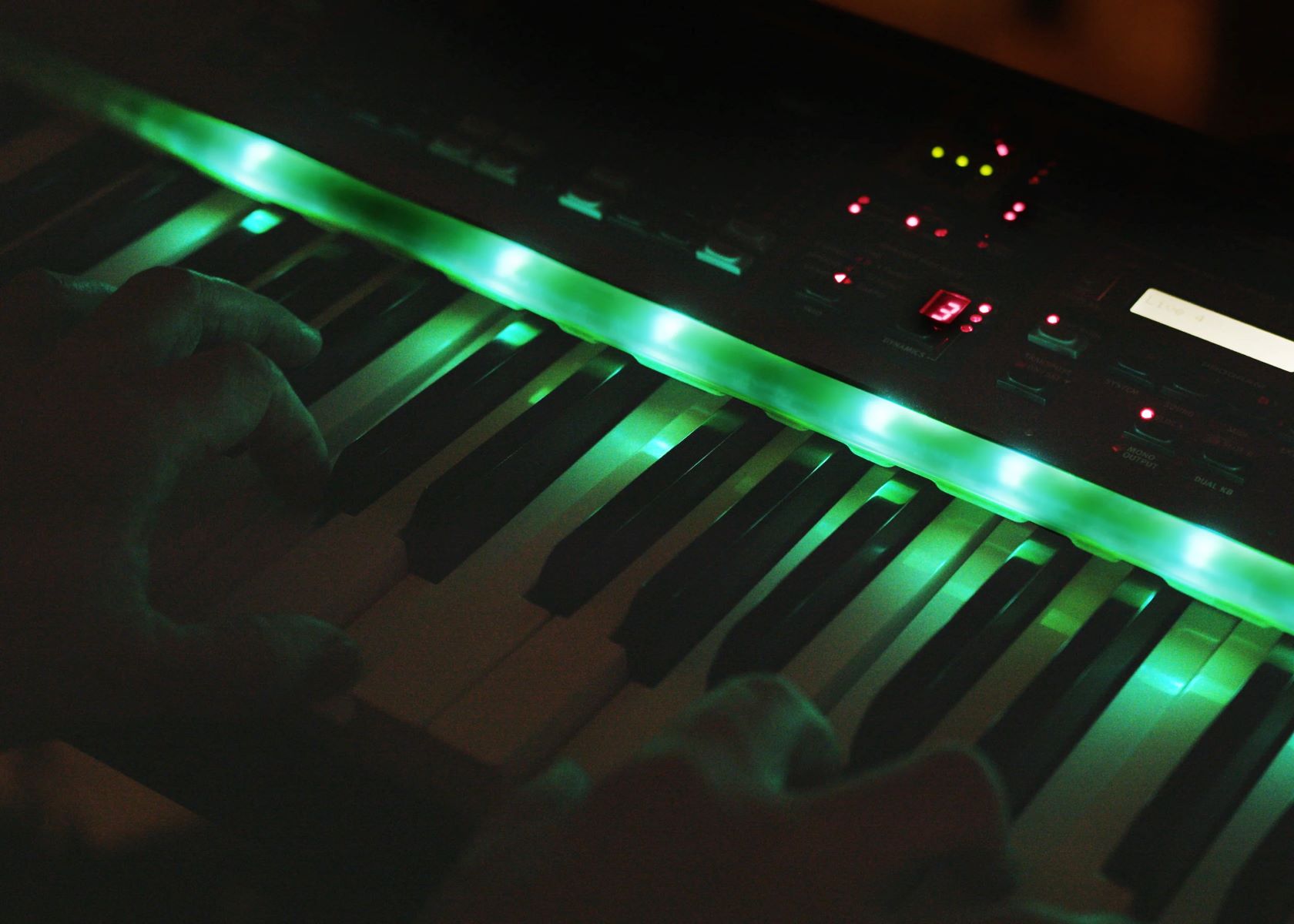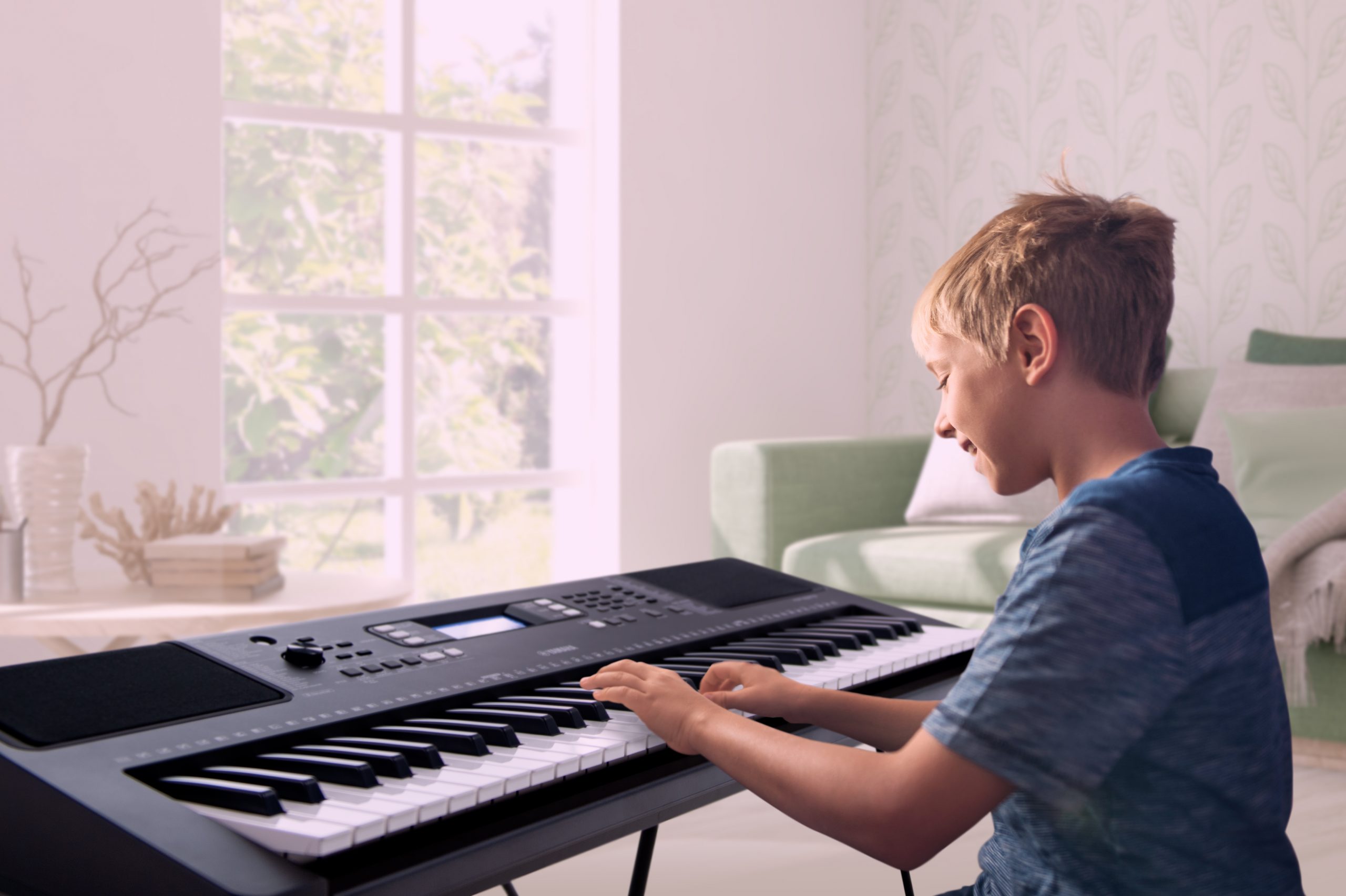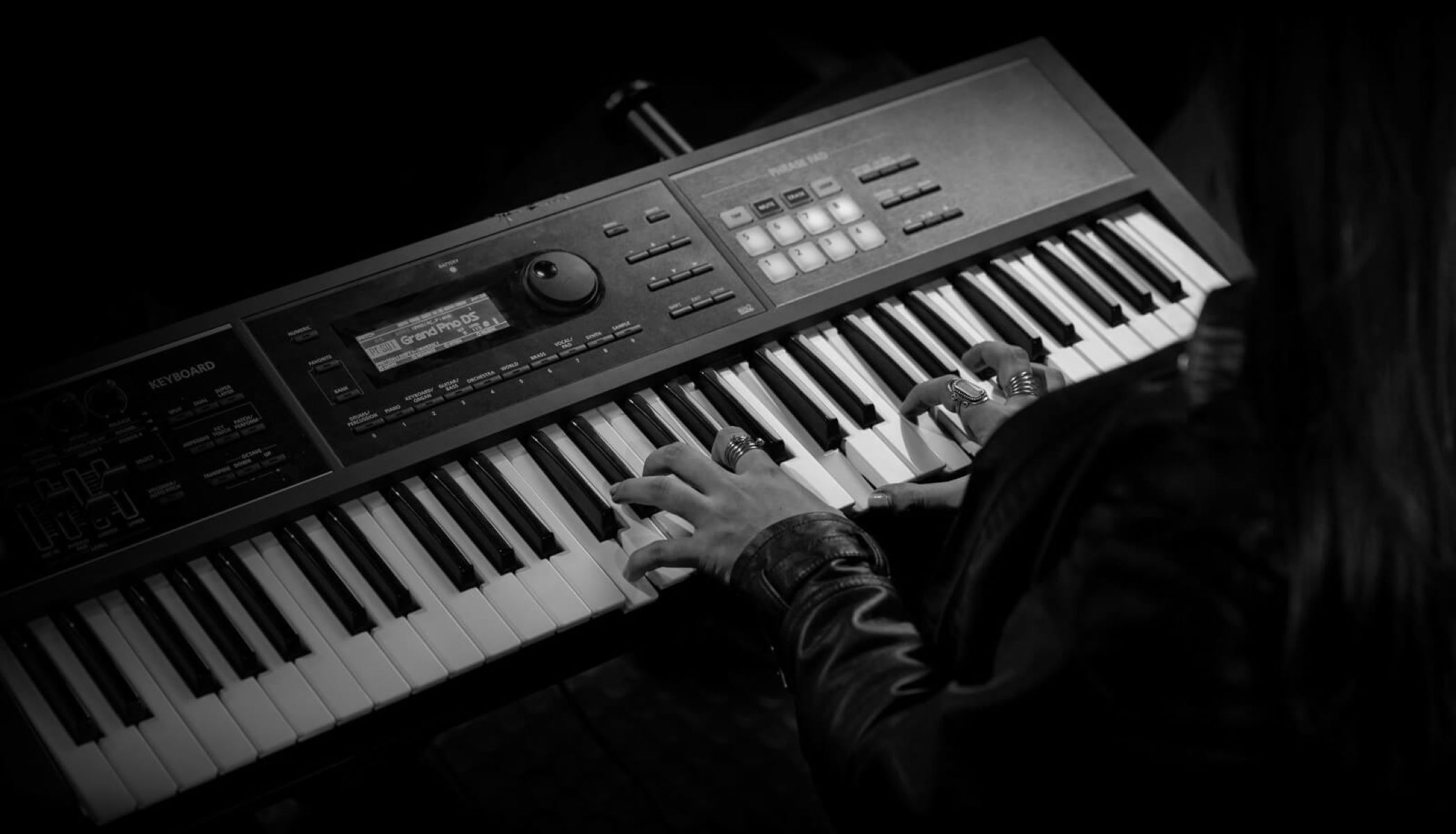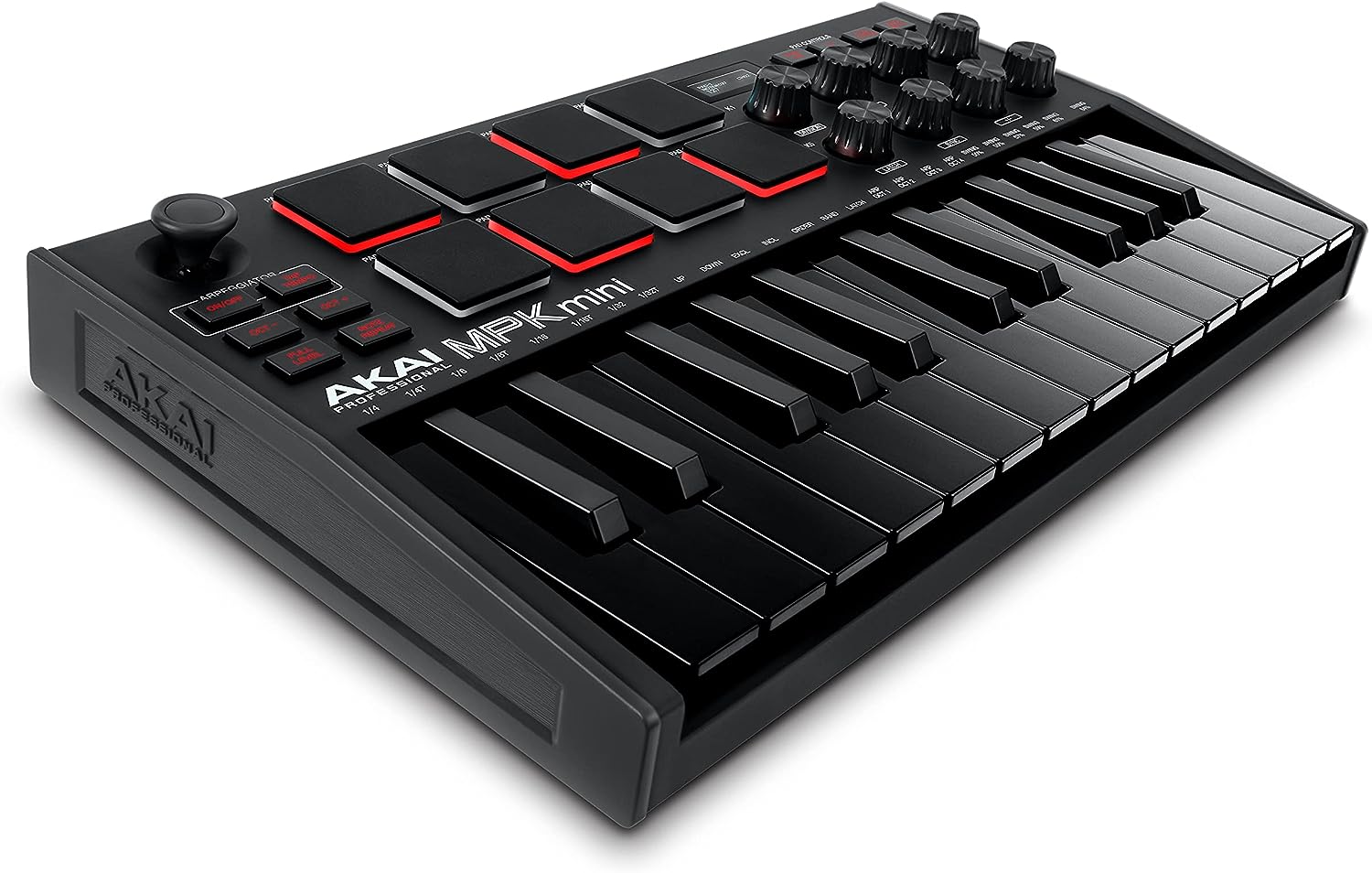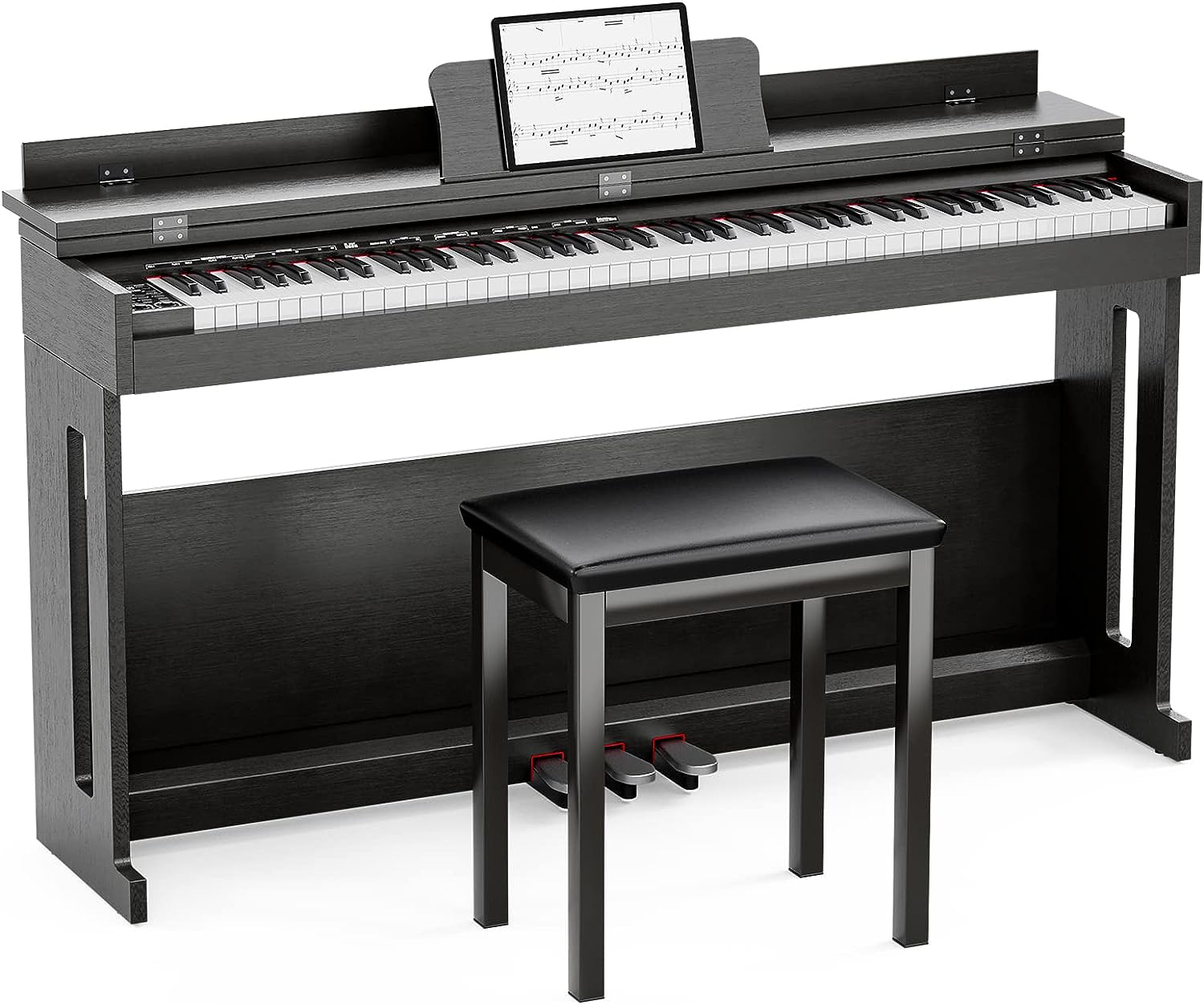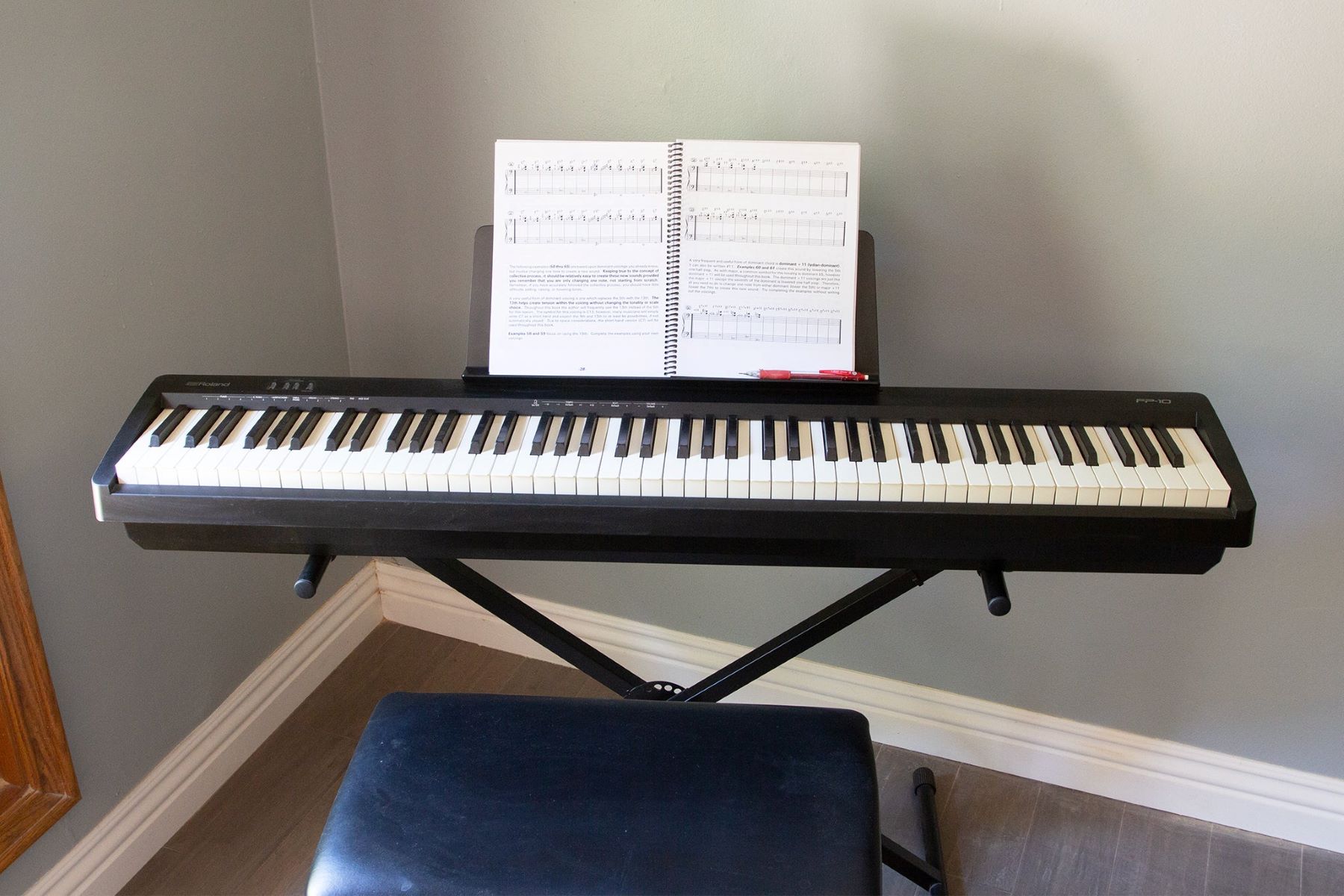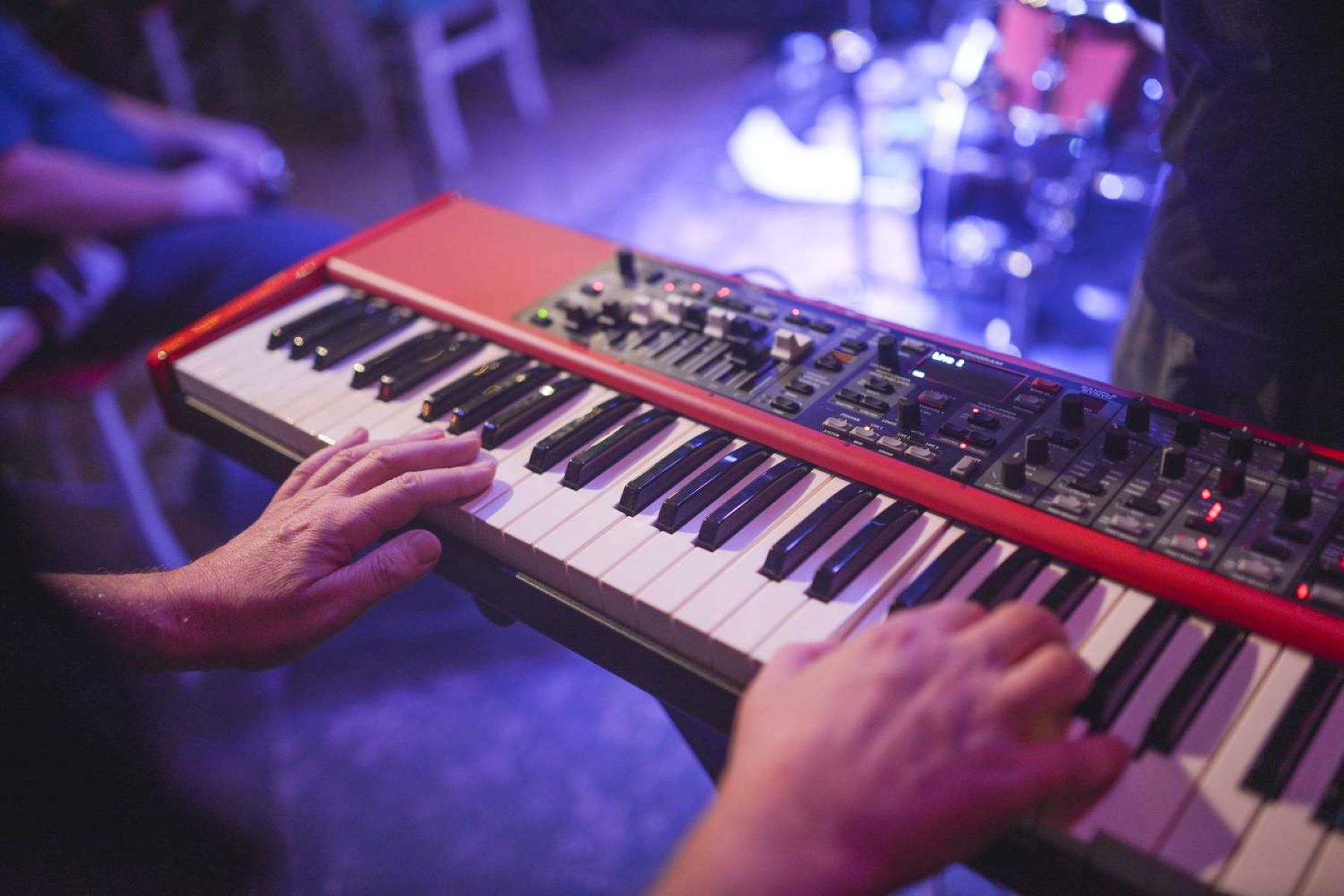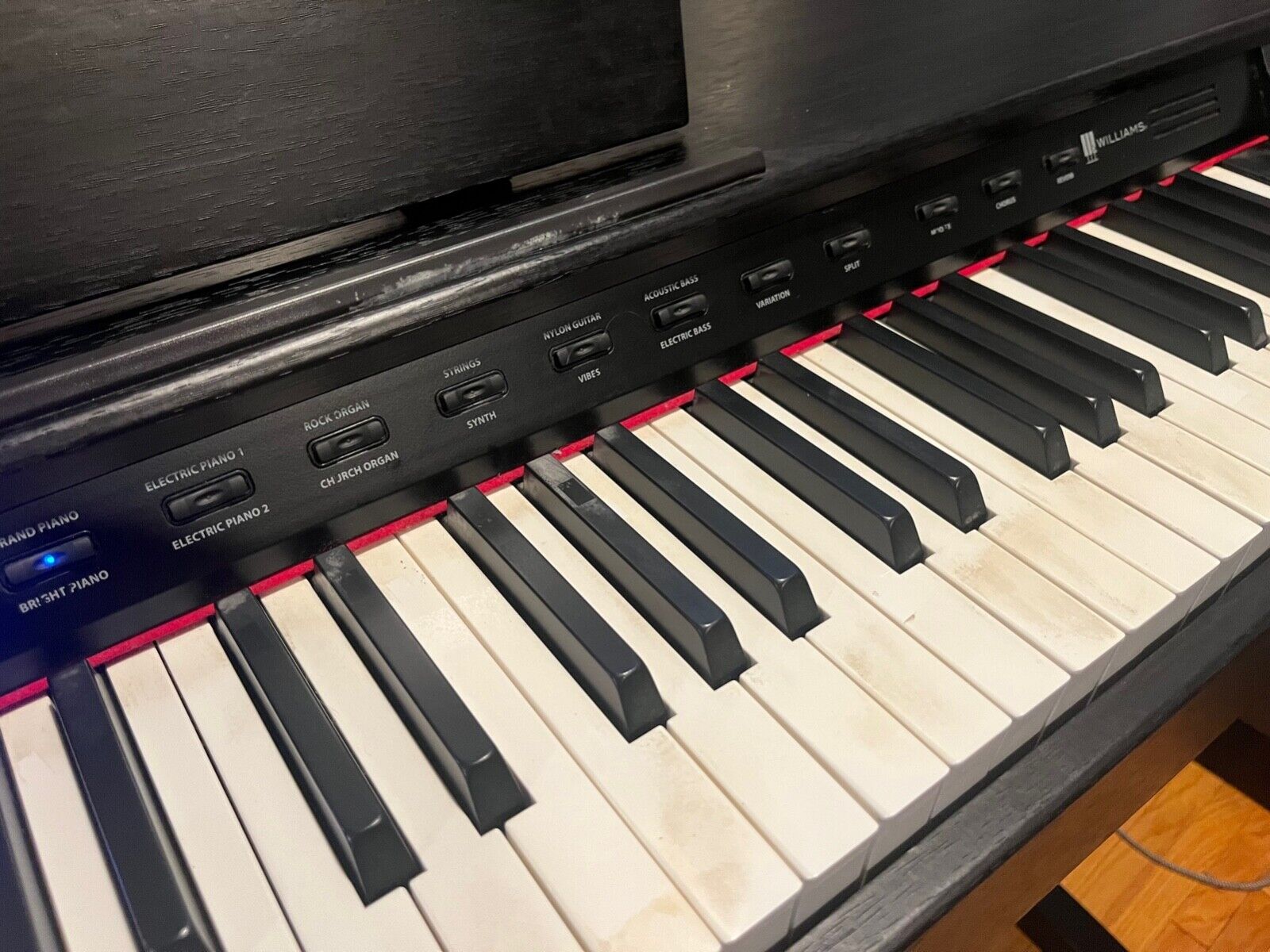Introduction
Digital piano keyboards have revolutionized the world of music by offering a versatile and dynamic alternative to traditional acoustic pianos. These innovative instruments combine cutting-edge technology with the timeless art of piano playing, providing musicians with a wide range of features and capabilities. Understanding how digital piano keyboards work involves delving into their intricate design, from key sensors and sound production to connectivity and advanced features.
In this article, we will explore the fundamental components and mechanisms that power digital piano keyboards, shedding light on the inner workings of these sophisticated instruments. By gaining insight into the key sensors, sound production, polyphony, connectivity, and other essential aspects, you will develop a deeper appreciation for the craftsmanship and engineering behind digital piano keyboards.
Let's embark on a captivating journey through the realm of digital piano keyboards, uncovering the magic that brings these instruments to life. Whether you are a seasoned pianist, an aspiring musician, or simply curious about the technology behind music, this exploration will illuminate the captivating fusion of artistry and innovation that defines digital piano keyboards.
The Basics of Digital Piano Keyboards
At the core of digital piano keyboards lies a sophisticated blend of technology and craftsmanship, designed to replicate the touch and sound of traditional acoustic pianos while offering a myriad of additional features. These instruments typically consist of 88 keys, mirroring the standard keyboard of a traditional piano. However, digital piano keyboards are significantly more compact and lightweight, making them ideal for both stage performances and home use.
One of the defining features of digital piano keyboards is their ability to emulate the touch and feel of an acoustic piano. This is achieved through the integration of weighted and graded keys, which provide a realistic playing experience akin to that of a traditional piano. Additionally, the keys are equipped with velocity sensitivity, meaning that the volume and tone of the sound produced vary depending on the force with which the keys are struck.
Furthermore, digital piano keyboards often incorporate built-in speakers, eliminating the need for external amplification in many cases. This feature enhances the portability and convenience of these instruments, allowing musicians to practice and perform without the added bulk of separate speaker systems.
Moreover, the design of digital piano keyboards encompasses a user-friendly interface, typically comprising a control panel or display screen that enables easy navigation of settings and functions. This intuitive layout empowers musicians to access a diverse range of sounds, effects, and settings, fostering creativity and versatility in their musical expression.
By mastering the basics of digital piano keyboards, musicians can harness the full potential of these instruments, unlocking a world of expressive possibilities and technological innovation.
Key Sensors and Action
Key sensors and action are integral components of digital piano keyboards, playing a crucial role in translating the pianist’s touch into expressive and nuanced musical output. Unlike acoustic pianos, which rely on mechanical components to produce sound, digital piano keyboards utilize advanced sensor technology to detect key movements and trigger corresponding audio signals.
Key sensors in digital piano keyboards are typically based on two main mechanisms: contact-based sensors and optical sensors. Contact-based sensors, also known as “mechanical” sensors, utilize physical contact between the keys and sensors to detect key presses and transmit the information to the instrument’s sound engine. On the other hand, optical sensors employ light-based technology to register key movements, offering precise and reliable performance.
The action of digital piano keyboards refers to the mechanism by which the keys respond to the pianist’s touch, including the sensation of weight and resistance. Graded hammer action, a common feature in digital pianos, replicates the graded weight of acoustic piano keys, with heavier resistance in the lower register and lighter touch in the higher register. This emulation of acoustic piano action enhances the authenticity of the playing experience, allowing pianists to execute dynamic and expressive performances.
Furthermore, some digital piano keyboards incorporate escapement simulation, a feature that replicates the subtle “notch” or “click” sensation felt when keys are pressed halfway down on acoustic pianos. This attention to detail in key action simulation contributes to a more immersive and authentic playing experience, bridging the gap between traditional and digital piano performance.
By understanding the intricacies of key sensors and action in digital piano keyboards, musicians can appreciate the meticulous engineering and technological innovation that underpin these instruments, ultimately enhancing their playing experience and musical expression.
Sound Production and Sampling
Sound production and sampling are pivotal aspects of digital piano keyboards, shaping the sonic characteristics and versatility of these instruments. Unlike acoustic pianos, which generate sound through vibrating strings and resonating chambers, digital piano keyboards rely on advanced sound synthesis and sampling techniques to produce a diverse range of tones and timbres.
One of the key methods employed in sound production is sample-based synthesis, where recordings of acoustic piano notes are meticulously captured and stored as digital samples. These samples form the basis for the instrument’s sound library, encompassing a wide spectrum of piano tones, from bright and resonant to warm and mellow. Through sophisticated sampling technology, digital piano keyboards can accurately reproduce the nuanced tonal qualities of acoustic pianos, offering an authentic and expressive playing experience.
Furthermore, digital piano keyboards often feature multi-layer sampling, a technique that captures multiple variations of each piano note at different dynamic levels. This approach enables the instrument to emulate the subtle tonal changes and nuances present in acoustic piano performances, allowing for a more realistic and expressive rendition of musical passages.
In addition to sample-based synthesis, digital piano keyboards may incorporate advanced sound processing algorithms, such as virtual modeling and physical modeling, to further enhance the richness and complexity of the instrument’s sound palette. Virtual modeling simulates the physical characteristics of acoustic piano components, such as strings and hammers, through mathematical algorithms, while physical modeling replicates the acoustic properties of pianos using computational models of sound production.
By leveraging these cutting-edge sound production techniques, digital piano keyboards offer musicians a diverse array of voices and tonal textures, empowering them to explore a spectrum of musical genres and styles with unparalleled sonic fidelity and expressiveness.
Polyphony and Voices
Polyphony and voices are essential features that contribute to the versatility and expressiveness of digital piano keyboards, allowing musicians to create immersive and layered musical performances. Polyphony refers to the number of individual notes that a digital piano can produce simultaneously, and it plays a crucial role in accommodating complex musical passages and sustaining rich, resonant chords.
Most digital piano keyboards offer a minimum polyphony of 32 notes, with higher-end models providing polyphony ranges of 64, 128, or even 256 notes. This expanded polyphony capacity enables pianists to play intricate compositions and sustain complex chord progressions without experiencing note dropouts or voice stealing, ensuring a seamless and immersive playing experience.
Furthermore, digital piano keyboards boast a diverse selection of voices, encompassing various instrument sounds beyond the traditional piano timbre. These voices, also known as tones or sound presets, include but are not limited to electric pianos, organs, strings, synthesizers, and orchestral instruments, offering musicians a broad palette of sonic textures to explore and integrate into their performances.
Moreover, many digital piano keyboards feature layering and splitting capabilities, allowing musicians to combine multiple voices and assign them to different sections of the keyboard. Layering enables the blending of two or more voices, creating rich, harmonically complex sounds, while splitting divides the keyboard into distinct sections, each assigned to a different voice. These features open up a world of creative possibilities, enabling musicians to craft intricate arrangements and orchestral textures with ease.
By harnessing the polyphony and diverse voices available in digital piano keyboards, musicians can unleash their creativity and craft captivating musical compositions that transcend the boundaries of traditional piano performance. Whether exploring the depths of classical repertoire or venturing into contemporary genres, the polyphony and voices of digital piano keyboards empower musicians to express themselves with depth and richness.
Connectivity and Features
Connectivity and features are integral components that elevate the functionality and versatility of digital piano keyboards, enabling seamless integration with external devices and unlocking a myriad of creative possibilities for musicians.
One of the key connectivity features of digital piano keyboards is MIDI (Musical Instrument Digital Interface), which allows the instrument to communicate with computers, synthesizers, and other MIDI-compatible devices. This connectivity facilitates recording, playback, and synchronization of musical data, empowering musicians to compose, arrange, and produce music with precision and flexibility.
Furthermore, many digital piano keyboards offer USB connectivity, enabling direct connection to computers, tablets, and smartphones for recording, playback, and integration with music production software. This seamless integration with digital audio workstations (DAWs) and mobile apps expands the creative potential of the instrument, allowing musicians to delve into music production and performance with modern digital tools.
Additionally, digital piano keyboards often feature audio outputs, such as quarter-inch jacks or headphone outputs, for connecting to amplifiers, mixers, or headphones. These outputs provide flexibility in routing the instrument’s sound to various audio systems, making them suitable for both stage performances and private practice sessions.
Moreover, advanced digital piano keyboards may incorporate Bluetooth connectivity, enabling wireless communication with smartphones, tablets, and Bluetooth-enabled audio devices. This wireless functionality enhances convenience and accessibility, allowing musicians to stream audio, play along with backing tracks, and control the instrument’s settings from compatible mobile devices.
When it comes to features, digital piano keyboards offer a diverse array of capabilities, including built-in metronomes, recording and playback functions, accompaniment styles, and educational features such as lesson modes and interactive tutorials. These features cater to musicians of all levels, from beginners seeking guidance in their musical journey to seasoned professionals looking to expand their creative horizons.
By embracing the connectivity and features of digital piano keyboards, musicians can seamlessly integrate their instruments into modern music production workflows, collaborate with digital tools, and explore a wealth of creative features that enhance their musical expression and performance experiences.
Conclusion
Exploring the inner workings of digital piano keyboards unveils a captivating fusion of artistry and technology, culminating in instruments that offer unparalleled versatility, expressiveness, and creative potential. From the meticulous design of key sensors and action to the sophisticated sound production and sampling techniques, digital piano keyboards embody a harmonious balance between tradition and innovation.
As musicians delve into the world of digital piano keyboards, they are greeted with a wealth of features and capabilities that transcend the confines of traditional piano performance. The integration of advanced connectivity options, such as MIDI, USB, and Bluetooth, empowers musicians to seamlessly interface with digital tools, opening doors to music production, collaboration, and exploration.
Furthermore, the polyphony and diverse voices available in digital piano keyboards expand the horizons of musical expression, enabling musicians to craft immersive compositions and performances that resonate with depth and richness. Whether layering voices, splitting the keyboard, or exploring a myriad of instrument sounds, digital piano keyboards offer a boundless sonic palette for musical exploration.
Ultimately, the journey through the realm of digital piano keyboards reveals an intricate tapestry of craftsmanship, innovation, and creativity. These instruments stand as a testament to the enduring legacy of piano performance, while embracing the possibilities afforded by modern technology. As musicians continue to harness the potential of digital piano keyboards, they embark on a captivating odyssey of musical discovery, where tradition and innovation converge to shape the future of piano playing.
In essence, digital piano keyboards represent the evolution of a timeless art form, inviting musicians to embark on a dynamic and expressive musical journey that transcends boundaries and unlocks new horizons of creativity.







